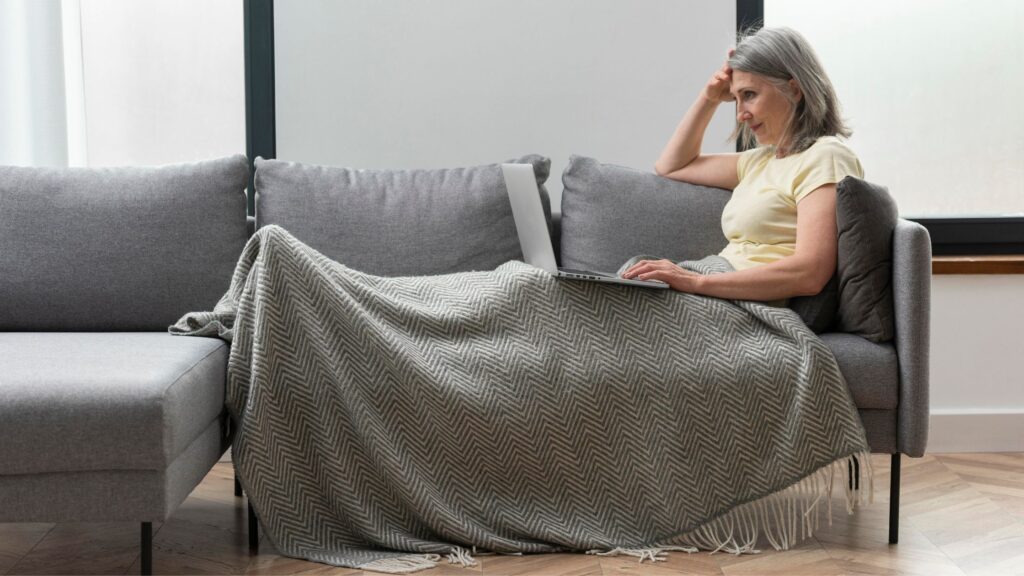Weighted products are generally used in the care of people suffering from Alzheimer’s disease or dementia for one reason: they promote concentration and attention.
Thus, like rugs and other comforters that wrap around the neck or can be placed on the knees, the sensory blanket contributes to the well-being of patients.
It has calming properties that allow them to sleep better daily despite a predisposition to aggressive behavior.
In this article, you will learn more about the benefits of this sensory integration approach.
Also read: Alzheimer’s Weighted Blanket
The Soft And Comforting Aspect Of The Sensory Blanket Reassures People Suffering From Alzheimer’s Disease
Sensory blankets are made of microbeads (glass or plastic) which exert a certain pressure on the sleeper’s body.
This “Deep Touch Pressure” action conditions him sufficiently so that he benefits from restful sleep.
So, in a sensory blanket, you have the impression of being in a cocoon.
This so-called “cocooning” effect is similar to a hug or a deep embrace.
This state of affairs is comforting for the sleeper who can then let go and concentrate on his physical sensations; which promotes falling asleep.
This comforting aspect of the duvet is what makes the success of therapies that advocate a sensory integration approach to the treatment of certain disorders.
For Alzheimer’s patients, who are plagued by frequent nighttime anxiety, this is quite good news, because they can finally naturally relieve the stress and anxiety that affects them when going to bed.
Isn’t this ultimately more advantageous than medication with all the dangers this practice entails for the body?
Sensory Activities To Overcome Aggression
People suffering from Alzheimer’s usually show signs of aggression due mainly to an inability to communicate verbally, death anxiety, and fear of change.
Thus, professionals have thought about activities that will allow sick seniors to overcome this aggression on a daily basis.
The concept of this sensory duvet is America’s.
More and more associations and institutions for the elderly are integrating tailor-made activities and accessories into their sensory integration program to bring comfort to Alzheimer’s patients and to encourage better living in the community.
But What Is It Actually About?
These sensory activity blankets specially intended for the medical sector and health professionals have a rather particular appearance.
Packed with buttons, zippers, pockets, and other gadgets, they meet different types of needs, but even more so a tactile need which is very evident among Alzheimer‘s patients.
The latter can thus concentrate on their physical sensations; which has the effect of making them less aggressive.
If you are considering giving a personalized gift to a loved one, choosing this type of cover can be interesting.
Another article on sensory blankets

